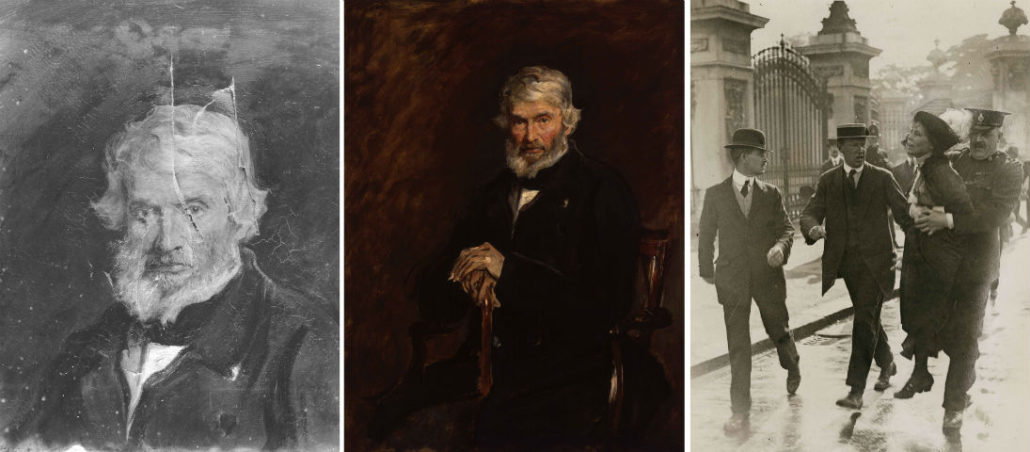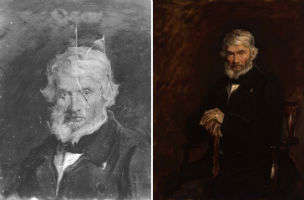
LONDON – A portrait slashed by a suffragette in the National Portrait Gallery will go back on display there for the first time in over 20 years. A photograph showing the damage will be included for the first time in a complementary display devoted to the suffrage movement that inspired the attack in July 1914. The portrait of one of the gallery’s founders, Thomas Carlyle, by Sir John Everett Millais, goes on display as part of the gallery’s year-long “Rebel Women” season to coincide with the new display “Votes for Women” opening Jan. 29.
The National Portrait Gallery has revealed archival accounts of the incident that was carried out by Anne Hunt following the rearrest of Suffragette leader Emmeline Pankhurst. On the morning of the attack, which occurred on a student day, meaning all nonstudents paid an entry fee, gallery staff attendant David Wilson recognized Anne Hunt from the previous day. He had thought her American “from the closeness from which she then examined the pictures.” Wilson’s suspicions were aroused because “no American would have paid the 6d entrance fee twice over.” Unable to follow her beyond his post, he then heard glass shatter. Hunt struck at least three times, slashing Carlyle’s portrait. One student, followed by an attendant, rushed to restrain her.
The gallery immediately set about restoring the work but despite efforts to safeguard the collection, the deputy chairman of the trustees said, “We really are at the mercy of women who are determined.”
Hunt was sentenced to six months imprisonment and was released on July 27. She revisited the gallery on Aug. 31 without incident, however, Assistant Keeper Milner afterward reported: “if Carlyle’s mutilator should return she is not to be admitted.”
From as early as January 1913 fear of Suffragette action at museums and public buildings meant female visitors were instructed to leave bags, muffs and parcels in cloakrooms in case of concealed weapons. Following a second attack on paintings at the National Gallery in May 1914, Milner wrote: “If women are to be admitted to public galleries there seems no alternative but to handcuff their hands behind their backs and to put up a grille to prevent them butting or barging into the pictures. Only under these conditions do I think it safe to admit them.”
A selection of the gallery’s collection of postcards produced by suffrage organizations to promote membership and to inspire loyalty towards their leaders also go on display for the first time. In these images the sitters appear well-dressed, elegant and demure, providing an antidote to press photographs, in which Suffragettes often appeared disheveled or distressed.



